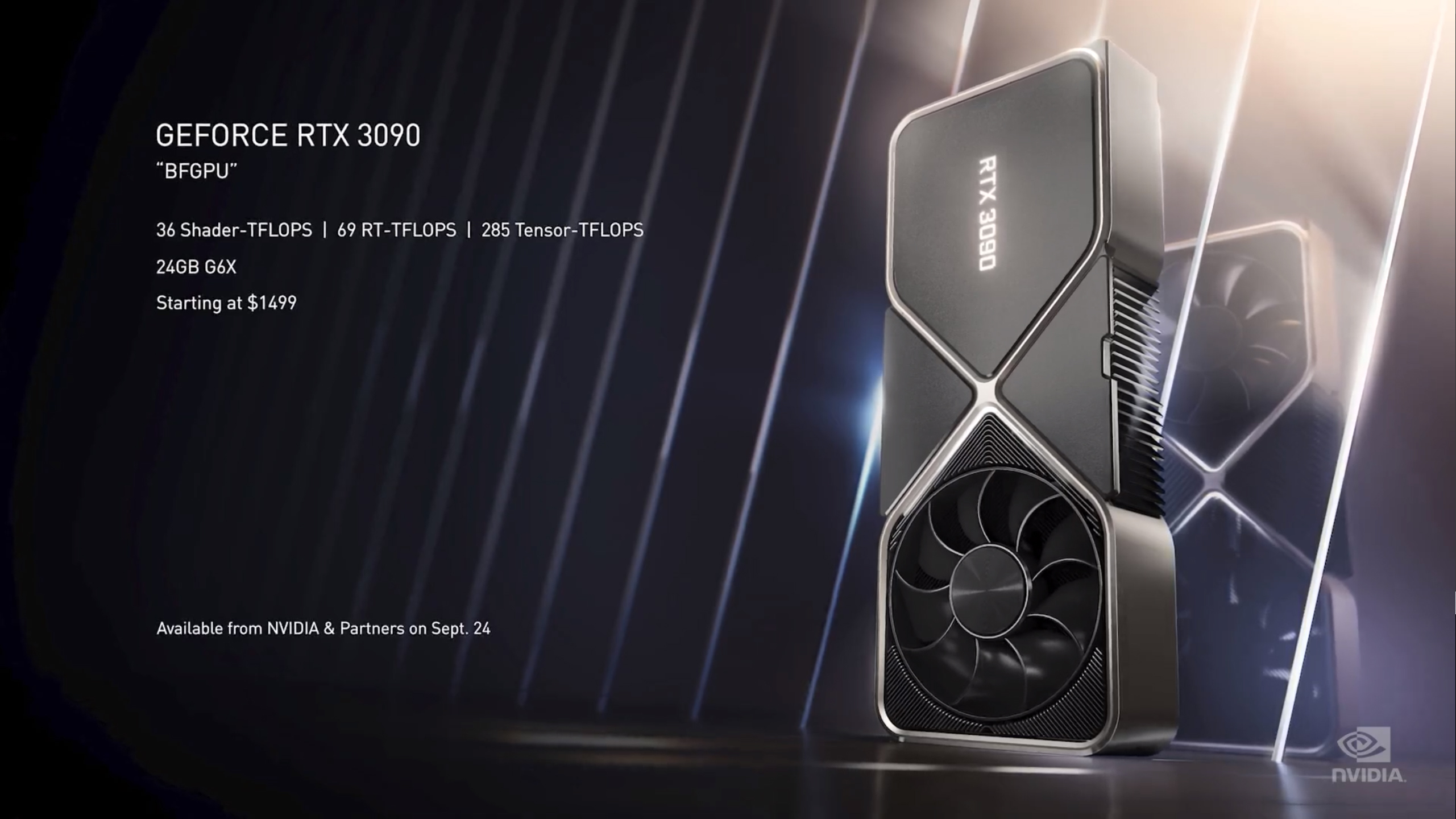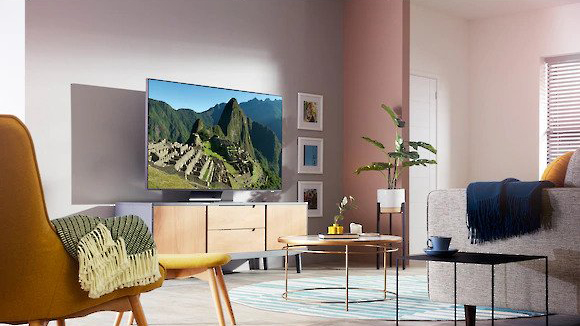With the Nvidia RTX 3090 GPU, there's now a genuine reason to buy an 8K TV
Something to push all those pixels with

Forget the PS5, forget the Xbox Series X – if you wanted a true glimpse of next-gen gaming power, all you had to do last night was tune into Nvidia’s Ampere GeForce GPU reveal. The “biggest generational leap” in the history of Nvidia’s graphics cards, the RTX 3070, 3080 and 3090 look set to deliver the most impressive PC gaming experiences we’ve ever seen.
And, in doing so, they’re perhaps the first solid, worthwhile reason to consider making the upgrade to an 8K TV.
The PlayStation 5 and and Xbox Series X have skirted around the edges of what their respective ‘8K ready’ specifications actually mean. Both claim some sort of support for 8K (which offers a screen resolution of 7680 x 4320 pixels compared to the now de rigueur 4K standard of 3,840 x 2160), but it’s not clear in what capacity – will that be 8K video streaming? 8K gaming? And if so, at what trade off cost to gameplay?

The Nvidia RTX 3090 on the other hand, is set to be a straight-out-of-the-box 8K beast. With a gigantic 24GB of GDDR6X memory, Nvidia is promising 60fps gaming at 8K resolutions, using 10,496 CUDA cores and a boost clock of 1.70GHz. Though it’s not like-for-like comparing a console to a PC (the cost of motherboards, RAM, CPU, storage and all the other components must be factored in), in raw GPU horsepower, the 3000 series is already set to make mincemeat of the as-yet-unreleased next-gen consoles – machines expected to last upwards of five years of play. Keep in mind that we've yet to test the card for ourselves – this is based on Nvidia's marketing claims at this point, and some reports from a lucky few early testers. But if there's a smidgeon of truth in it, it's a mind-blowing proposition.
Now, lower down the RTX 3000 family tree, you’re not going to get the same level of performance. But older titles will potentially be able to reach those 8K heights – and at the very least, you’re going to get rock-solid 4K / 60fps plus on even system-hogging titles.
- Gears 5 at 8K demolishes $2,499 Nvidia Titan RTX graphics card
- Death Stranding on PC almost hits 60fps at 8K – all it takes is a $2,500 Nvidia GPU
- Doom Eternal at 8K sends a $2,500 graphics card to hell - but it's still a blast to play
8K revolution
Until now, there’s been very little content to tempt even the most avid home cinema fan into the 8K fold. Though fantastic TVs like the Samsung Q800T do an incredible job of upscaling 4K video (and lower resolution) so they look even crisper on their 8K panels, the amount of content, be that video footage or game content, built to actually support 8K screens natively is practically zero.

But the RTX 3000 family, when paired with a reasonably powerful computer, will offer the first genuine steps towards native 8K gaming, even on some of the most demanding of titles. You won’t have to wait for new content to be created – you’ll simply soup up your existing catalogue of titles to the new 8K benchmark. The thought of Cyberpunk 2077, running in 8K with all its graphical bells and whistles activated makes the heart skip a beat.
Sign up for breaking news, reviews, opinion, top tech deals, and more.
Nvidia seems aware of its new found potential in the living room, and it can be seen in the AV partners it’s now aligning itself with. The cards themselves all support the latest HDMI 2.1 standard, letting them connect with sets that can handle VRR (variable refresh rates) and ALLM (auto low latency modes) – the same gaming-focussed specs that the next-gen consoles are using to vie for a place under your TV. The latest LG televisions go one better – they support Nvidia’s own G-Sync technology, the buttery smooth frame-syncing feature that is a genuinely game-changing experience when you first set eyes on it.

When it comes to the collective price of all these advancements, we’re of course entering into fantasy lottery win territory in terms of the amount of money required to set up a system like this. Though the RTX 3070 will sell within reach of the average Joe at around the $499 mark, an RTX 3090 will be a wallet-whelping $1,499. Depending on the screen size, an 8K OLED TV will wander into truly silly-money realms – you could spend upwards of $25,000 with ease.
But this is the sort of set up that the words ‘next-gen’ really conjure up in your head. More pixels, more frames, more everything – yes, more money too, but the best of the best never comes cheaply.
- Nvidia Ampere: everything you need to know about the 3090, 3080 and 3070 cards

Gerald is Editor-in-Chief of Shortlist.com. Previously he was the Executive Editor for TechRadar, taking care of the site's home cinema, gaming, smart home, entertainment and audio output. He loves gaming, but don't expect him to play with you unless your console is hooked up to a 4K HDR screen and a 7.1 surround system. Before TechRadar, Gerald was Editor of Gizmodo UK. He was also the EIC of iMore.com, and is the author of 'Get Technology: Upgrade Your Future', published by Aurum Press.